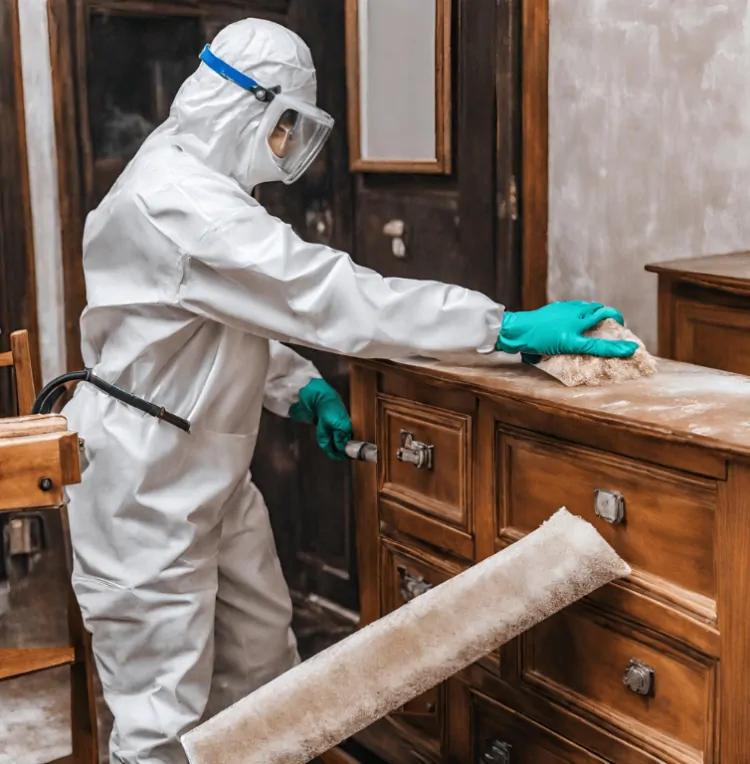Top Challenges in Hoarding and Squalor Cleanups and How Professionals Handle Them
hoarding and squalor cleanups

Hoarding and squalor cleanups can be among the most challenging and sensitive cleaning services.
These situations often involve severe clutter, compromised living conditions, and underlying emotional and mental health concerns, making the cleanup process complex and nuanced.
Here, we explore the top challenges professionals face during hoarding and squalor cleanups and how they manage them with care, efficiency, and expertise.
1. Emotional Sensitivity and Psychological Barriers
One of the primary challenges in hoarding and squalor cleanups is the emotional aspect.
Hoarding often stems from mental health conditions like obsessive-compulsive disorder (OCD), anxiety, or depression.
For many individuals, letting go of items, no matter how trivial, can be emotionally distressing.
This emotional attachment to possessions can make the cleanup process difficult and can trigger intense reactions, including anxiety, sadness, or even anger.
How Professionals Handle It:
Trained hoarding cleanup specialists approach each situation with empathy and patience.
They work closely with clients, helping them make small decisions to ease the process.
Professionals often collaborate with mental health experts, especially in extreme cases, to provide the emotional support needed.
By taking a compassionate, step-by-step approach, professionals aim to respect the client’s emotional needs while working toward a cleaner and safer environment.
2. Health and Safety Hazards
Hoarding and squalor conditions can present serious health and safety risks. Homes may contain biohazards like mold, pests, animal waste, decaying food, and, in some cases, sharp objects or chemicals.
These hazards can lead to respiratory issues, infections, or injuries if not handled carefully.
How Professionals Handle It:
Certified hoarding cleanup companies are equipped with protective gear and specialized cleaning supplies to ensure safety during the cleanup.
This includes masks, gloves, and protective suits to minimize exposure to biohazards. Professionals use industry-grade equipment to thoroughly disinfect and sanitize the area, making it safe for re-occupancy.
They are also trained in handling potentially dangerous items and substances, ensuring that all health and safety protocols are observed.
3. Extreme Clutter and Limited Accessibility
In severe hoarding situations, the sheer volume of items can make accessibility a major challenge.
Clutter may block doorways, hallways, and emergency exits, which not only complicates the cleaning process but also increases risks in case of emergencies like fires.
How Professionals Handle It:
Hoarding cleanup specialists carefully create a plan to clear pathways and restore accessibility.
They prioritize safety, often starting by clearing exits and high-traffic areas before moving into less accessible rooms. By systematically organizing and categorizing items, professionals make the cleanup process more manageable and efficient, ensuring that critical areas are restored to a functional state as quickly as possible.
4. Risk of Structural Damage
Over time, accumulated clutter and neglect in hoarding situations can lead to structural issues within the home.
Floors, walls, and foundations can be damaged by mold growth, leaks, or the weight of excessive items.
In some cases, neglected properties may even suffer from compromised electrical or plumbing systems.
How Professionals Handle It:
Cleaning professionals assess the structural integrity of the property before starting the cleanup.
They often collaborate with other professionals, such as contractors or plumbers, to address any underlying damage that poses a safety risk.
Depending on the severity of the damage, the cleanup crew may recommend further repairs or adjustments to make the home habitable once again.
5. Sorting and Decision-Making
Sorting through a hoarded home is a time-consuming process, as each item must be evaluated.
Clients may struggle to make quick decisions due to their attachment to items, which can extend the timeline of the project significantly.
Additionally, many items may need to be sorted into categories for disposal, recycling, donation, or retention.
How Professionals Handle It:
Experienced hoarding cleanup teams use a systematic approach to sorting and categorizing items.
They respect the client’s preferences, giving them control over what stays and goes.
Professionals often set boundaries around specific areas or types of items to speed up decision-making.
They may also suggest creating a "transition space" where items can be temporarily stored until the client feels ready to part with them.
This thoughtful process helps reduce stress and preserves a sense of control for the client.
6. Disposal and Recycling Requirements
Disposing of large quantities of items, especially those that may be hazardous or unsuitable for regular disposal, poses logistical challenges.
Items like chemicals, electronics, and large furniture pieces require special disposal methods to comply with local regulations.
How Professionals Handle It:
Cleanup companies often have partnerships with waste disposal and recycling facilities to ensure safe and legal disposal of items.
They separate recyclable materials and hazardous waste and arrange for proper disposal to minimize environmental impact.
Their knowledge of local regulations ensures that all materials are handled in compliance with the law, simplifying the process for clients.
7. Relapse Prevention and Aftercare
The risk of hoarding behavior returning after a cleanup is a real concern for many clients.
Without addressing the root causes, clients may find themselves accumulating items again over time.
How Professionals Handle It:
Some hoarding cleanup services offer follow-up visits or connect clients with aftercare support programs.
They may suggest organizational strategies to help clients maintain a clean space.
Collaborations with mental health professionals also provide ongoing support to address underlying hoarding tendencies, creating a sustainable plan for a clutter-free lifestyle.
Conclusion
Hoarding and squalor cleanups present unique challenges, from emotional and mental health considerations to health hazards and disposal requirements.
Professional cleaning teams meet these challenges with empathy, expertise, and strategic planning, transforming cluttered spaces into safe, functional, and livable homes.
By addressing both the physical and emotional aspects of hoarding, professionals help clients move toward a healthier, more organized life.
What's Your Reaction?















